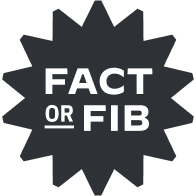| Original photo by GWImages/ Shutterstock |
| It can take two weeks to make one jelly bean. | The next time you pop some jelly beans into your mouth, you may want to take a moment to appreciate just how much effort goes into producing these bite-sized delights. As explained by industry giant Jelly Belly, the process begins by heating a sugar, cornstarch, corn syrup, and water mixture, known as a slurry, and adding fruit purée, juice concentrate, or other ingredients for flavoring. From there, the mixture is squirted into cornstarch-coated molding trays, and left to solidify into the chewy jelly bean centers.
The following day, the bean centers are sent through a steam bath and a sugar shower to keep them from sticking. They are then loaded into a spinning machine for a process known as "panning," in which sugar and syrup are manually applied over the course of two hours to slowly build each bean's candied shell. Following another settling period, the candies receive an additional syrup coating, before being polished with confectioner's glaze and beeswax. Upon earning a final thumbs-up by way of visual inspection and spot taste-testing, the beans are stamped with the Jelly Belly logo and shipped out into the world.
It's a lot of shower, rinse, rest, and repeat for a process that takes seven to 14 days to complete. And while that might seem like an outsized increment of time for such a tiny edible, the Americans who gobble down an average of 16 billion jelly beans every Easter seem to think it's worth it.
|
|
 | | President Ronald Reagan had 720 bags of jelly beans delivered to the White House each month. | | |
|
|
| President Ronald Reagan had 720 bags of jelly beans delivered to the White House each month. |  |  |
|
|
|
|
No comments:
Post a Comment